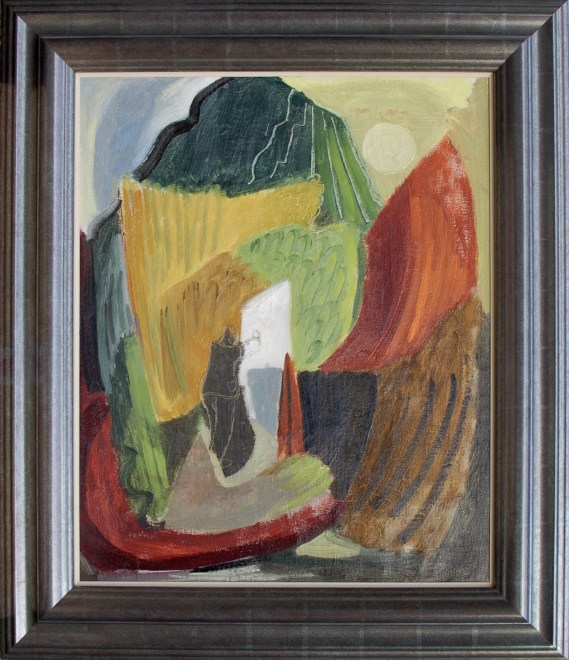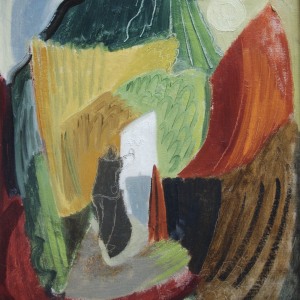Provenance
The artist’s studio; Francis and Michael Biggs, 1964; Milmo-Penny Fine Art, Dublin, 1989
Note: This major work by the artist, together with The Ark, encapsulates the forty-day flood as described in the Book of Genesis 7:18. ‘And the waters prevailed and increased greatly on the earth; and the ark went upon the face of the waters’, which is interpreted by Rivers in her well-documented painting. However, it has now come to light that the current painting, heretofore overlooked, illustrates the following verse: Genesis 7:19. ‘And the waters prevailed exceedingly on the earth; and all the high mountains that are under all the heavens were covered’. The portrayal is perhaps not as graphic as the former but, in all probability, Rivers’ intention here was to illustrate the floodwater as it rose up the mountain. It has been suggested that Strange Shore also relates to the Ark but this is most unlikely. However, when we consider works such as The Images, Creation: the Fifth Day, At the Foot of the Cross, and The Second Fall for example, it is clear that Elizabeth Rivers found great inspiration in the Bible for her work.
In March 1931, Elizabeth Rivers left the Royal Academy Schools and, with the aid of a legacy of three hundred pounds, went to Paris. There, each year from October to the following May, she continued her studies for another three years under André Lhote (1885-1962), Gino Severini (1883- 1966) and at the Ecole de Fresque. She was introduced by Lhote to Synthetic Cubism and by Severini to Divisionism although it was the former which most influenced her later work. With Severini she also studied wall painting and learned how to produce cartoons from small sketches, a practice which later stood her in good stead in her work with Evie Hone. While none of the paintings which she did at this time seems to have survived, her Mural Design, probably of the mid-thirties and reproduced in Lucy Wertheim's Adventure in Art,7 shows that she had adopted a strongly mannered style reminiscent of the work of her English contemporary William Roberts (1895-1980).
Exhibitions
Dublin Painter’s Society, 1948, number 20; Irish Exhibition of Living Art, Dublin, 1950, number 51; Society of Women Artists as ‘Man and Mountain’; Memorial Exhibition, Dublin, 1966, number 67; Gorry Gallery, Dublin, 1989, number 7. Literature: Dr S. B. Kennedy, ‘A Retrospective View’, Dublin, 1989



